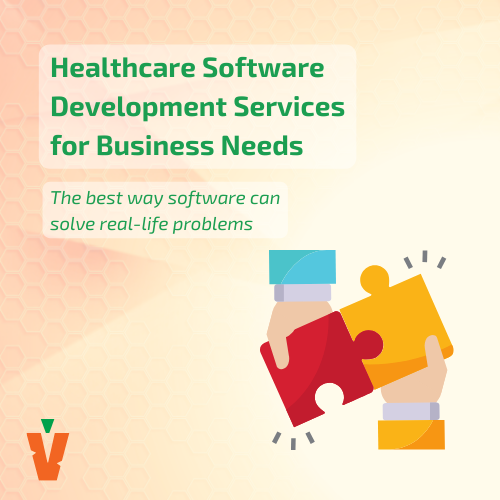Epic and TEFCA will soon come hand in hand — what does that mean for the rest of us?
By the end of 2024, our goal is that the full Epic community will have committed to transition to TEFCA with plans to be live by the end of 2025.
This statement by Epic came out on August 16th, 2024. In the same document, the EHR giant credited its healthcare interoperability network, Carequality, for its plans to align with TEFCA.
This change aims to increase patients’ access to their records and improve the exchange of PHI for providers and plans. What does it mean for healthcare SaaS companies? Let’s break down this piece of news and its implications.
Understanding TEFCA and Its Impact
The Trusted Exchange Framework and Common Agreement (TEFCA) is a government-led initiative to create a standardized approach for sharing healthcare information. It seeks to make it easier for healthcare organizations, regardless of their network, to exchange patient data securely and efficiently.
Version 2.0 of the Common Agreement was released in April 2024, building upon the 1.1 version from November 2023. Its goals are to establish nationwide healthcare interoperability, simplify connectivity for healthcare organizations, and enable people access to their healthcare data.
TEFCA has two components:
- The Common Agreement: between the Recognized Coordinating Entity (RCE), The Sequoia Project, and each Qualified Health Information Network (QHIN). It also establishes the technical framework for healthcare data exchange.
- The Trusted Exchange Framework: Principles to foster trust among HINs — standardization; openness and transparency; cooperation and non-discrimination; privacy, security, and safety; access; equity; and public health.
Find out more about TEFCA on ONC’s website.
Find the list of organizations that are officially designated as QHINs here.
What does TEFCA mean for the healthcare network in the US?
TEFCA is a step toward a more unified healthcare system in the US. The standardization of healthcare data exchange ensures different healthcare providers can easily share and access patient information. When a patient’s data enters one system, it becomes accessible to all others, even across the country or in different networks.
And on the flip side of the coin?
For large organizations, the resources and infrastructure necessary to adopt new standards are readily available. They have the teams, finances, and systems to follow the new requirements.
The healthcare system is not made up solely of giants, though. Unlike industry leaders, smaller organizations often struggle with limited budgets and resources. They may struggle with the transition due to the high costs of system upgrades, the complexity of compliance, and potential disruptions to their existing workflows.
However, considering Epic’s move, they might not have the choice by the end of next year.
Will There Be a Ripple Effect?
Epic currently holds 36% of the US market and is growing by the year. Carequality is also big in healthcare interoperability, connecting over 45 networks. As some of the most prominent entities in healthcare IT, their adoption of TEFCA will set a precedent for the industry.
Fierce Healthcare found out what this means for the rest:
‘[Epic is] signaling to everyone else, ‘You better move over to TEFCA because we're moving over to TEFCA, otherwise you won't have access to Epic sites,’ said Brendan Keeler, interoperability and data liquidity practice lead at healthcare strategy and software development firm HTD Health. ‘They're trying to lead. They’re saying ‘You can do the work and move over by 2025 or you can be left behind.'
Smaller vendors may face increasing pressure to adapt to TEFCA. As major players push for widespread adoption, those who don’t align with these standards risk being left behind.
This shift also influences Carequality. As Epic said:
Epic will continue to support our customers’ connectivity through Carequality during the transition to help ensure the ongoing success of national healthcare interoperability.
Smaller healthcare organizations still relying on Carequality could be forced to transition to TEFCA or risk becoming siloed from large systems. This could result in a rush to adopt TEFCA standards, pressuring smaller entities to upgrade or lose the connection with Epic providers.
Dave Cassel, past executive of Carequality, stated in a blog post:
My reading of it is that Epic’s customers will be transitioning to TEFCA between now and the end of 2025, and that Epic’s support for Carequality will not continue into 2026.
The Implications for Healthcare Software Developers
With Epic’s TEFCA transition by 2026, healthcare software developers must begin aligning their products with the standards now. Given how many providers use this EHR, adaptation is the only way to stay compatible.
How will this look on the tech side? As Micky Tripathi, the Assistant Secretary for Technology Policy, National Coordinator for Health Information Technology, and Acting Chief Artificial Intelligence Officer at HHS said:
We have long intended for TEFCA to have the capacity to enable FHIR API exchange. This is in direct response to the health IT industry’s move toward standardized APIs with modern privacy and security safeguards and allows TEFCA to keep pace with the advanced, secure data services approaches used by the tech industry.
Let’s break it down to analyze the effects of TEFCA on healthcare SaaS development.
- FHIR: Tripathi notes that TEFCA is evolving to include support for FHIR APIs, which are becoming the industry standard for healthcare data exchange. Developers must create or update apps to connect with TEFCA-compliant networks using FHIR. The focus next year should be on retrofitting legacy systems.
- Security: Data-sharing practices in healthcare must align with rigorous standards used by tech giants in other industries. This could involve stronger encryption, multi-factor authentication, and robust user access controls to protect PHI.
- Scalability: TEFCA’s alignment with the tech industry signals a shift toward real-time, API-driven data sharing. There will be opportunities for those who can integrate cutting-edge tech like AI and ML with TEFCA-compliant platforms.
Here are our takeaways for SaaS companies preparing for a TEFCA-driven future. They’re based on our experience with healthcare interoperability and Epic:
- Start preparing now. If your hospital clients are already part of a HIN or a QHIN, work with them to understand how their network integrates with TEFCA. Test your system’s ability to send and receive patient data within the TEFCA framework before 2025.
- Understand your data. Review your current systems and tools for capturing, identifying, and storing health data. Find and address them to allow comprehensive healthcare data exchange.
- Familiarize yourself with FHIR. This resource on Open Health Stack is a good place to get started, as is the Welcome to FHIR page on FHIR’s website. You might also partner with an experienced software solutions partner like us at Vitamin for assistance.
Preparing for the Future
As the healthcare landscape evolves with Epic’s TEFCA implementation, developers should take steps to ensure readiness. Begin by investing in technologies that are TEFCA-compliant and align with FHIR standards. Early adoption and compliance will position your solutions for success.
Over the next year, collaborate with other developers and health IT professionals to share strategies. A network of industry contacts offers support and enhances your ability to adapt. Most importantly, develop a roadmap for keeping your existing and new SaaS in line with Epic and TEFCA standards.
Stay In Touch
To keep up with the latest updates on healthcare software development, follow our blog, LinkedIn page, and newsletter. We’re also navigating this ever-changing landscape, so why not join forces?
.png)



